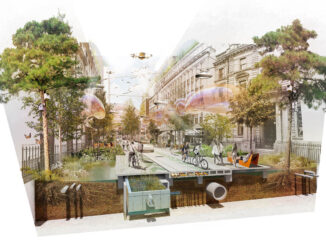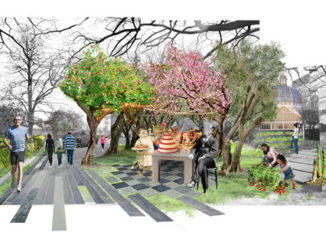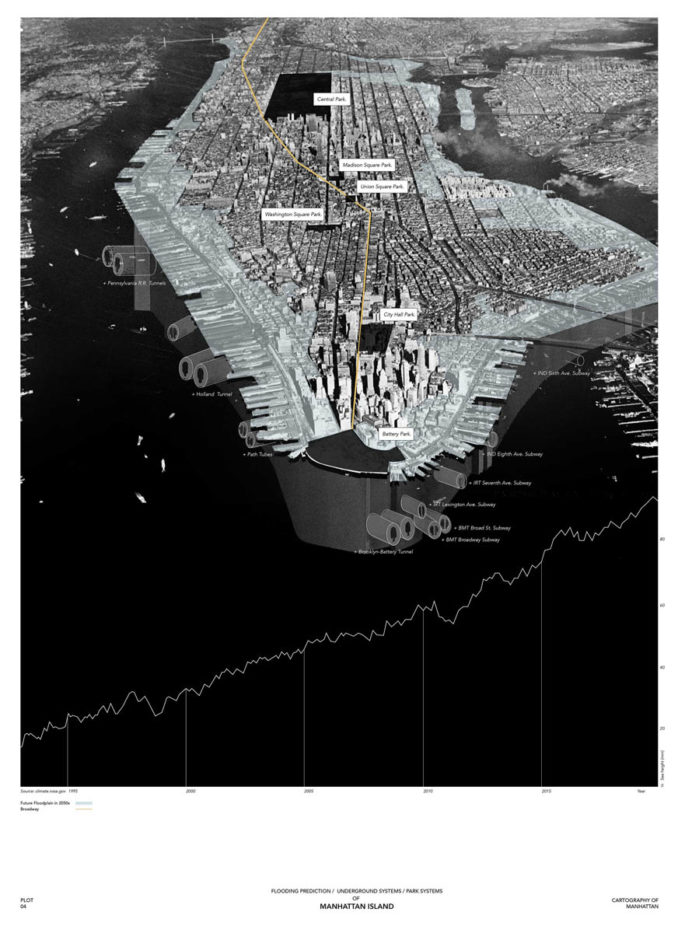
More than four hundred years ago, Manhattan Island was a place of wilderness, occupied by wildlife and the Lenni Lenape indigenous tribes. After the settlement of the colony and the development of the city, which eventually pushed its original inhabitants out, Manhattan eventually became one of the most urbanized cities in the world.
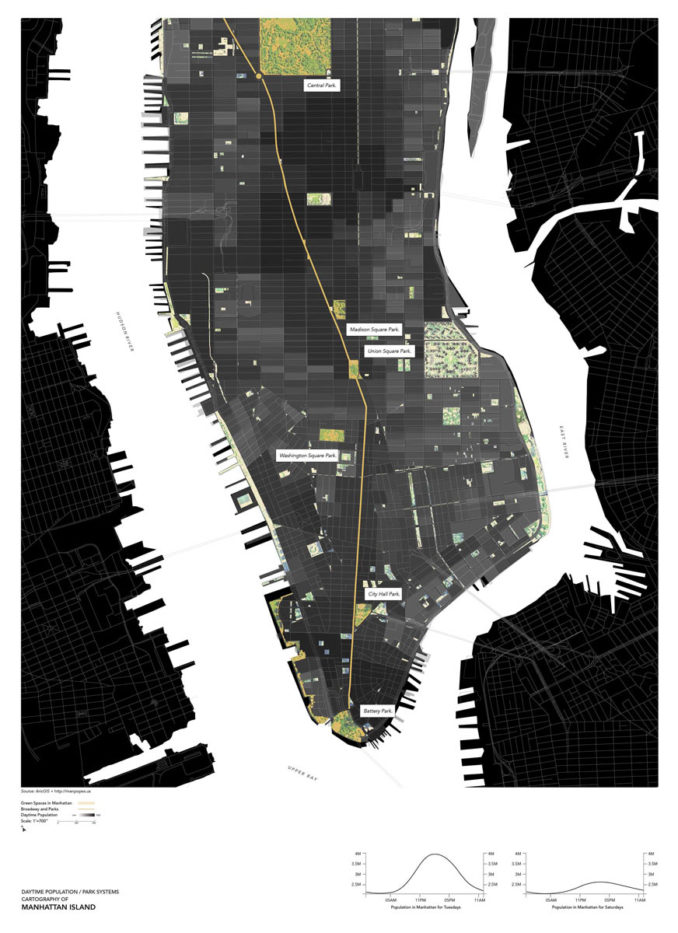
Eco Broadway proposes a multi-functional urban fabric operating at different scales to attract and sustain wild ecologies back into the city, while still supporting its complex social interactions. By taking over Broadway, the very first path on the island, the design aims to integrate a whole ecological system, starting in the south, from Battery Park to the mid-island, to Central Park. The main strategic goals are achieved by connecting and renovating relevant green spaces. With continuous access to humans and non-human species, different types of habitats, and distinct types of public space, it seeks to integrate ecological and social values with cultural manifestations.
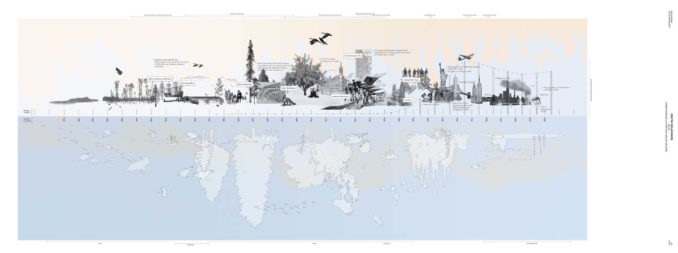
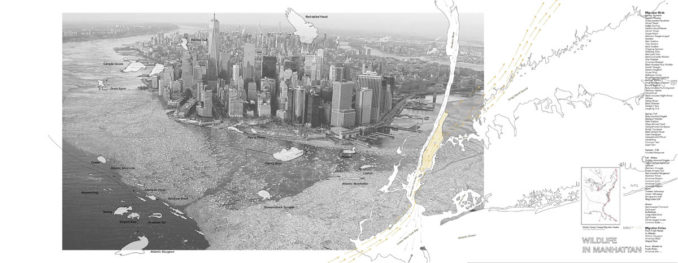
The assumed controversy of interrupting all vehicular transportation along Broadway with a robust landscape system gestures towards an eventual disruption to the current Anthropocene epoch.
Context & Analysis
From a historical perspective, and following Manhattan’s indigenous communities of Lenni Lenape, the European settlers occupied the island in 1524. As the colony grew the population started to increase and, in turn, this pushed most wildlife away. There were more than 1000 animal species in Manhattan, but their habitats have quickly disappeared.
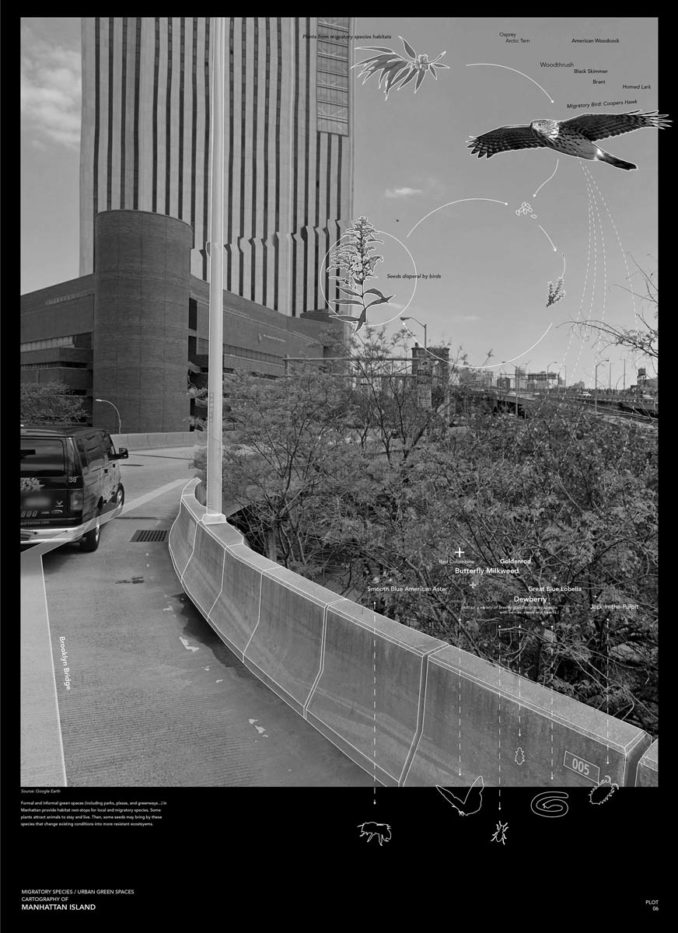
However, on a regional scale, there are thousands of species living in the New York and New Jersey Estuary. Besides, this geographic location is crucial not only for local species but also for migratory species. For bird species, Manhattan island is on the North Atlantic Flyway route. Hundreds of migratory birds pass through the island every year. A lot of migratory aquatic species also swim up and down the Hudson River.
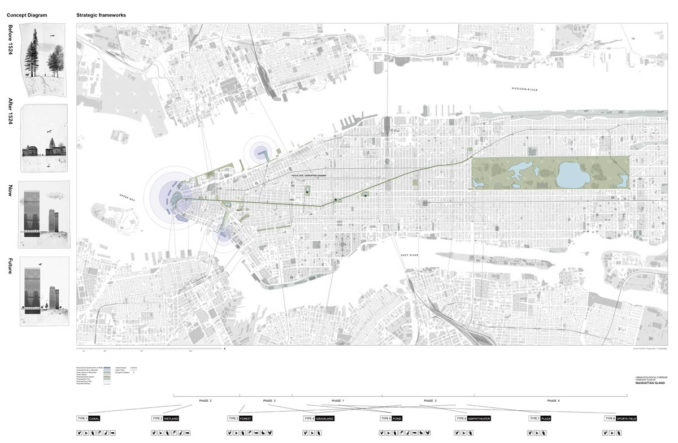
Strategy & Design
Eco Broadway takes over the southern and midsection of Broadway and certain adjacent spaces to integrate a whole ecological system starting from Battery Park to Central Park. In doing so, it connects and renovates relevant green spaces.
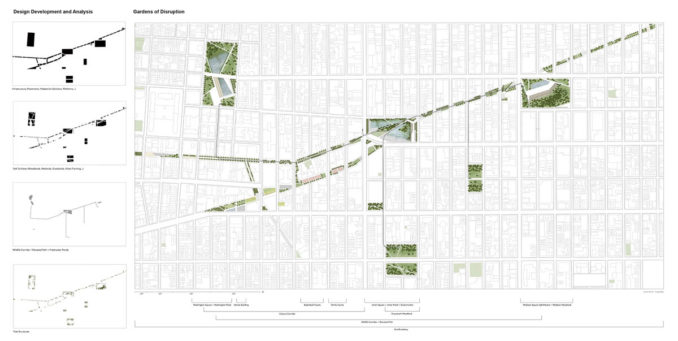
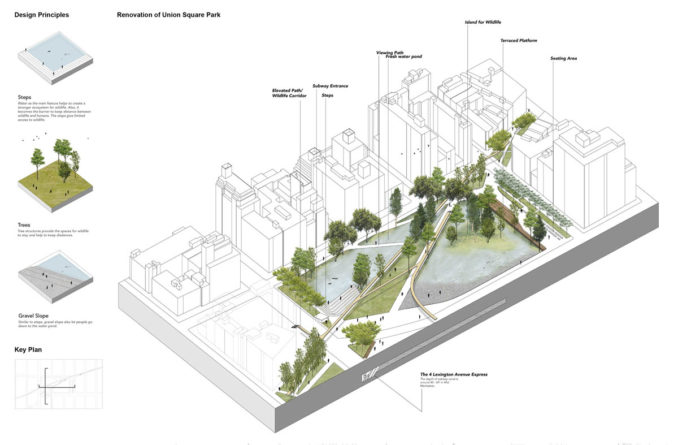

The whole strategy applies a wild-urban-wild transition to the landscape. When people walk along the intervention, they may experience the spaces getting progressively “wilder,’ in this case meaning a high carrying capacity to host a larger number of animals. Overall, the strategy aims to keep a delicate and interwoven balance between nature and culture.
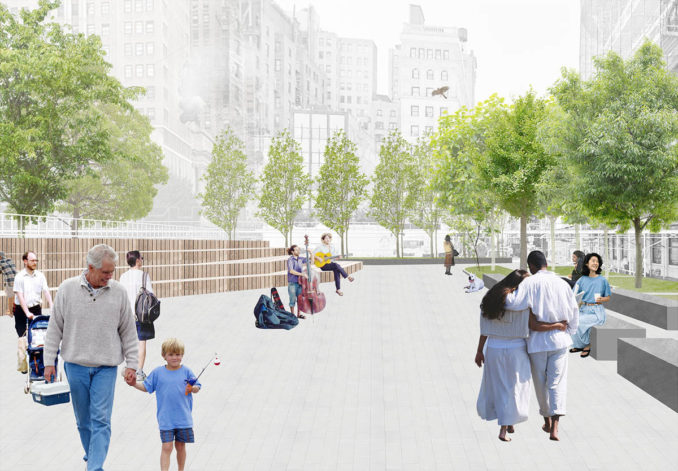
Since the vehicular circulation is removed from Broadway, the whole transitional space can now be accessed by street-level pedestrian paths, subway systems, and elevated paths. The depth of existing subway stations varies through the island and the landscape design adapts to it.
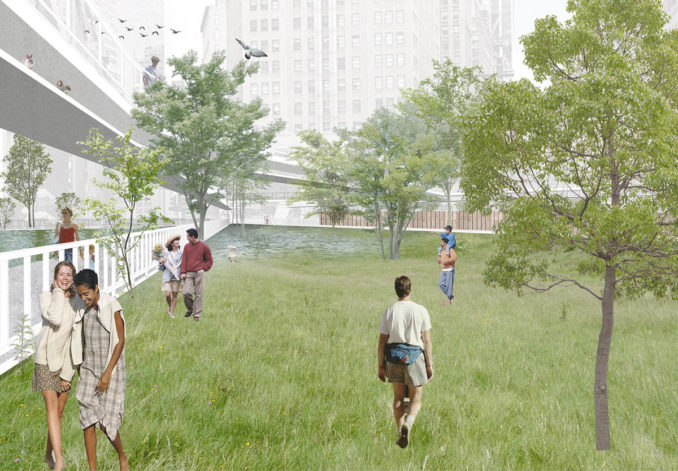
Eco Broadway examines historical water features on the island and brings them back to certain areas. At the south end of Manhattan, it introduces saltwater into the site and creates canals, wetlands, and ponds for wildlife. In mid-manhattan, due to the topography, the project creates freshwater ponds in several parks and squares to attract wildlife and recall the memories of historical water features. At the edges of the island, it aims to create floating islands, eco-piers, living shorelines to make suitable conditions for aquatic species. And it makes the whole ecological network stronger, more complex, and complete.
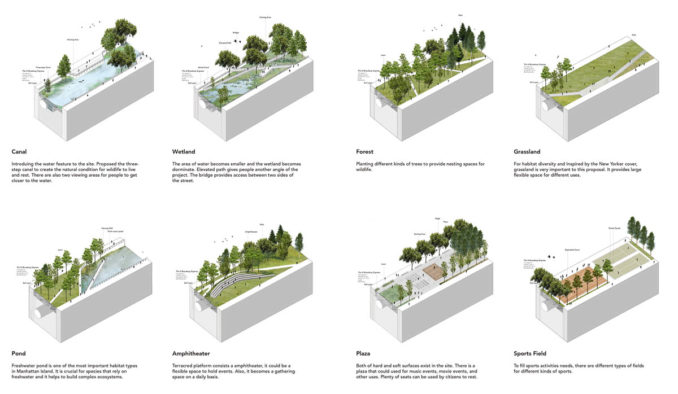
Eco Broadway
Project Credits
Student: Zhouqian Guo, Rhode Island School of Design
Supervisor: Tiago Torres-Campos
Image Credits: Zhouqian Guo


